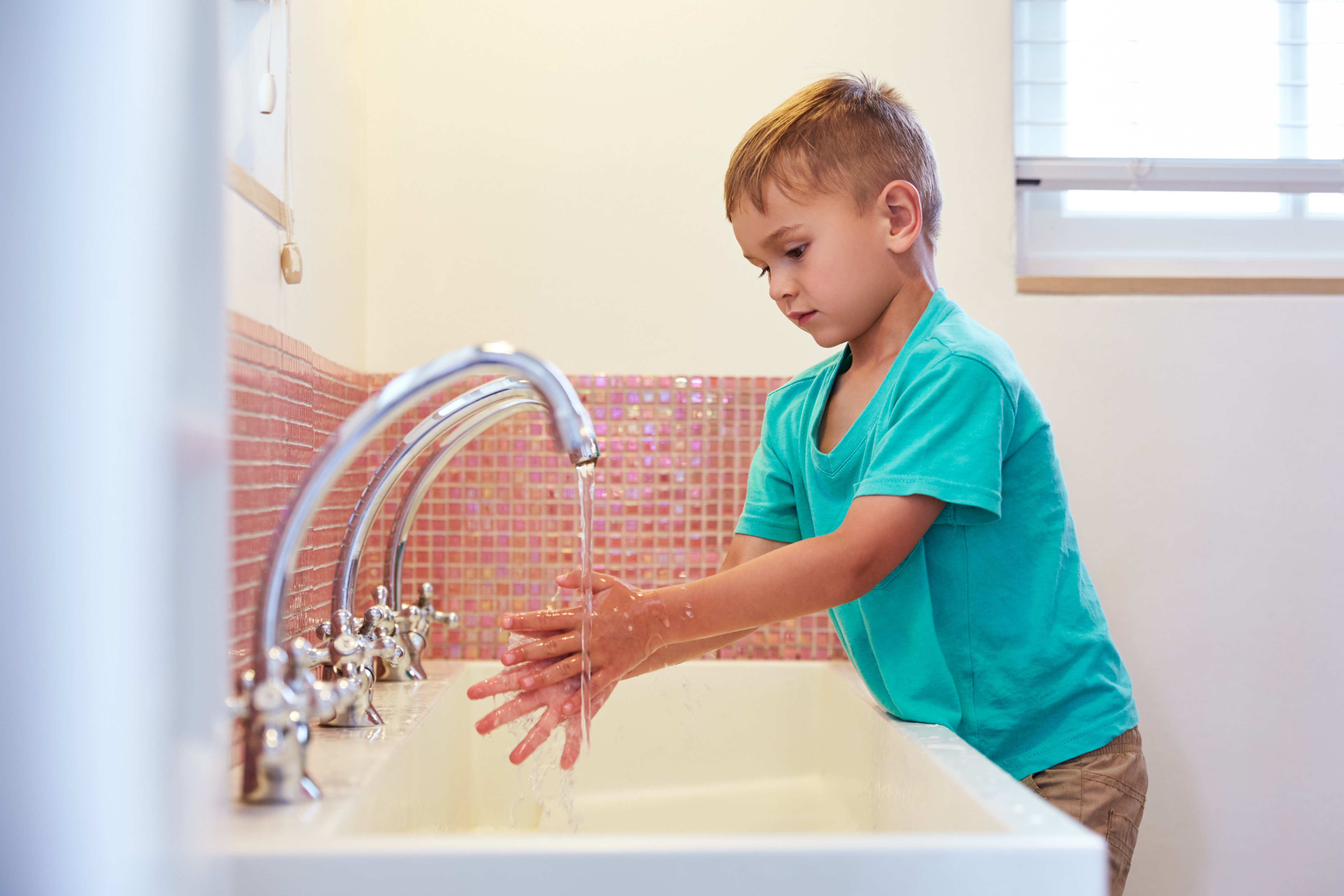
Education is the number one priority for our school aged children. When parents hug and kiss their kids goodbye for the day, they expect school leaders and administrators to keep them physically safe and emotionally sound. Many parents are aware of the issues with restrooms in our K-12 schools. From unsanitary conditions, to being a prime bullying location— all the way to the long term health effects of avoiding bathrooms — dirty restrooms can have a significantly detrimental effect on student health and learning.
With students being in school an average of 7 hours per day, it is unhealthy for them to avoid necessary bathroom breaks. Given how often adults avoid public restrooms, it makes sense that students often avoid school bathrooms. However, while adults often have the ability to choose and visit a bathroom of their choosing, students don’t have the luxury of selection and are forced to use school bathrooms.
Avoidance of restroom use because of sanitation issues can negatively impact both health and learning. Nursing Times reports, “A survey of schools and school nurses conducted by ERIC in 2010 found 79% of respondents recognized the link between poor toilets and poor health, and 84% felt toilet-related health issues have a negative effect on children’s learning.”
Policies on restroom visits and the conditions of the restrooms themselves can both deter students from using them. In 2018, a survey created by the Society for Women's Health Research revealed a majority of school nurses said their schools lacked written policies regarding students’ restroom use. In addition, the condition of school restroom facilities and frequency of their maintenance can vary widely from one district to another, but unlike adults, school children often have no say in the cleanliness of the restrooms he or she has access to.
Impacts on Student Health
When students avoid unsanitary and smelly restroom facilities, it can create a variety of problems. Students may be tardy after searching for a cleaner restroom. They may avoid eating or drinking so as not to use the restroom during school. They may even “hold it” for long periods of time, which can lead to LUT (lower urinary tract) and gastrointestinal health issues, as well as decreased focus and poorer learning outcomes.
Dehydration
Visits to the restroom can be difficult for students. Students are often expected to fit water and restroom breaks in the short times they are given to travel to their next class. Crowded hallways or a visit to their locker can make this even more challenging.
To avoid restrooms deemed unsanitary and to avoid being late, many students report reducing their intake of water or other drinks, potentially leading to dehydration.
Dehydration can cause serious symptoms that detract from learning: fatigue, dizziness, poor concentration and reduced cognitive abilities. The human brain is made up of 80% water, and as a result, water is essential in neurological transmissions. On a cellular level, poor hydration reduces the brain’s ability to transmit and receive information.
Once a student is dehydrated enough to notice they are thirsty, their mental performance including memory, attention and concentration have all decreased by as much as 10%.
Urinary Health Issues
Even when students are hydrated enough, avoiding urination can also cause problems, such as lower urinary tract health issues, not to mention affecting a student’s ability to concentrate in class.
According to the Urology Care Foundation, the bladder stays healthy when it fills and empties without getting overfull. Holding urine for too long and too often can cause lifelong problems carried into adulthood.
While educational institutions can have several areas of concern regarding urinary health, bathrooms play a vital role. A 2014 electronic cross-sectional survey among teachers, as reported in the National Center for Biotechnology Information, indicated 88% of respondents (4,166 teachers) encouraged students to hold urine, which “can promote or exacerbate LUT dysfunction.” The survey also reported dirty restrooms as an issue by a third of respondents.
Gastrointestinal Health Issues
The avoidance of restrooms can also lead to gastrointestinal issues, such as chronic constipation or incontinence, in younger school children.
Stinky toilets, no supplies, dirty floors and walls, and lack of privacy are all reasons children give pediatricians for not using school toilets.
This can be problematic both in the classroom and at home, because it can set back potty-training behaviors and mean a resurgence in accidents.
Spread of Germs
Unhealthy conditions lead to unhealthy schools thanks to the accelerated transmission of germs and bacteria. Given what goes on in restrooms, toilets, floors and tiled walls can harbor a whole host of bacteria, such as Norovirus, E. coli, Shigella, and Streptococcus. But avoiding restrooms can lead to an additional issue: a lack of handwashing.
Washing your hands after you use the restroom isn’t just for germs introduced in the bathroom – washing your hands after using the restroom is a way to ensure that the germs and bacteria that get on your hands in day-to-day activity are removed throughout the day.
With nearly 22 million U.S. school days lost to the common cold each year and 38 million lost to the flu, it’s within educators’ best interests to invest in procedures and policies that keep school restrooms safe and sanitary throughout the school year.
Improve Health and Stop the Spread of Germs
Tile restoration may be the solution to stop the spread of germs. Restoration services are available at a fraction of the cost of replacement and offer products that can decrease the spread of germs in schools and increase health, safety and attendance of your students and faculty.
This is an excerpt from our full report, available here.

